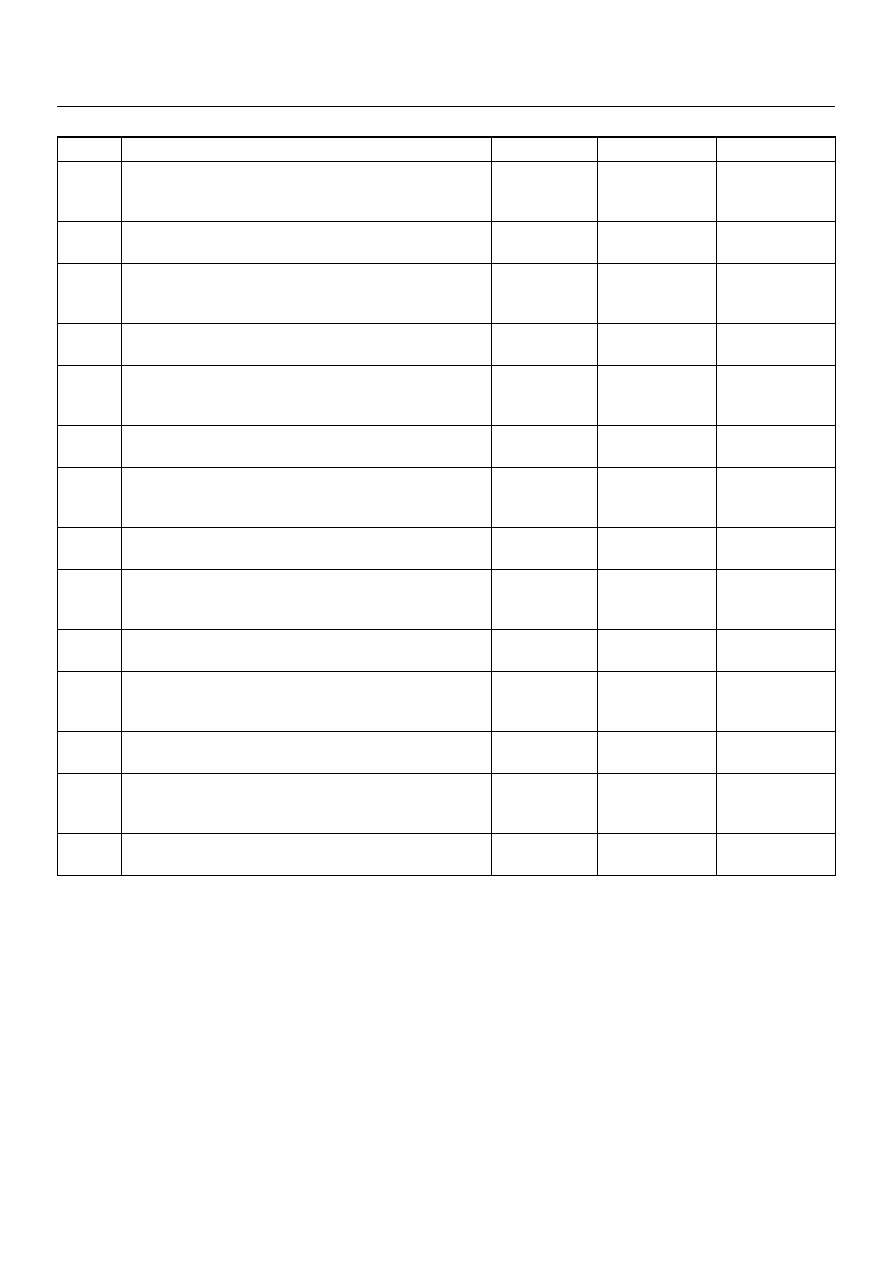Opel Frontera UE. Manual - part 622

HEATING, VENTILATION AND AIR CONDITIONING (HVAC)
1A–45
Magnetic Clutch Does Not Run (Cont’s)
CAUTION: There are condition whitch air
conditioner system dose not operate except trouble
as follows.
1. The throttle is greater than 90%.
2. The ignition voltage is below 10.5 volts.
3. The engine speed is greater than 4500 RPM for 5
seconds or 5400 RPM.
4. The engine coolant temperature (ECT) is greater
than 125
°
C (257
°
F).
5. The intake air temperature (IAT) is less than 5
°
C
(41
°
F).
6. The power steering pressure switch signals a high
pressure condition.
Step
Action
Value(s)
Yes
No
16
Repair an open circuit between terminal No.B4-3 and
No.I24-1.
Is the action complete?
—
Go to Step 15
—
17
Is there continuity between harness side connector
terminal No.I23-6 and No.B-2?
—
Go to Step 19
Go to Step 18
18
Repair an open circuit between terminal No.I23-6 and
No.B4-2.
Is the action complete?
—
Go to Step 17
—
19
Is there continuity between harness side connector
terminal No.I23-1 and ground (No.B-8)?
—
Go to Step 21
Go to Step 20
20
Repair an open circuit between terminal No.I23-1 and
No.B-8.
Is the action complete?
—
Go to Step 19
—
21
Is the battery voltage applied between harness side
connector terminal No.C11-1 and ground?
—
Go to Step 23
Go to Step 22
22
Repair an open circuit between terminal No.C11-1
and No.F-5 fuse.
Is the action complete?
—
Go to Step 21
—
23
Is the battery voltage applied between harness side
connector terminal No.X5-2 and ground?
—
Go to Step 25
Go to Step 24
24
Repair an open circuit between terminal No.X5-2 and
No.C11-2.
Is the action complete?
—
Go to Step 23
—
25
Is the battery voltage applied between harness side
connector terminal No.B4-1 and ground?
—
Go to Step 27
Go to Step 26
26
Repair an open circuit between terminal No.B4-1 and
No.X5-4.
Is the action complete?
—
Go to Step 25
—
27
Is there continuity between harness side connector
terminal No.X5-1 and No.C3-E15?
—
Go to Step 29
Go to Step 28
28
Repair an open circuit between terminal No.X5-1 and
No.C3-E15.
Is the action complete?
—
Verify repair
—
29
Replace the PCM.
Is the action complete?
—
Verify repair
—